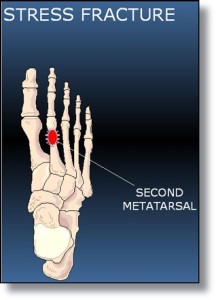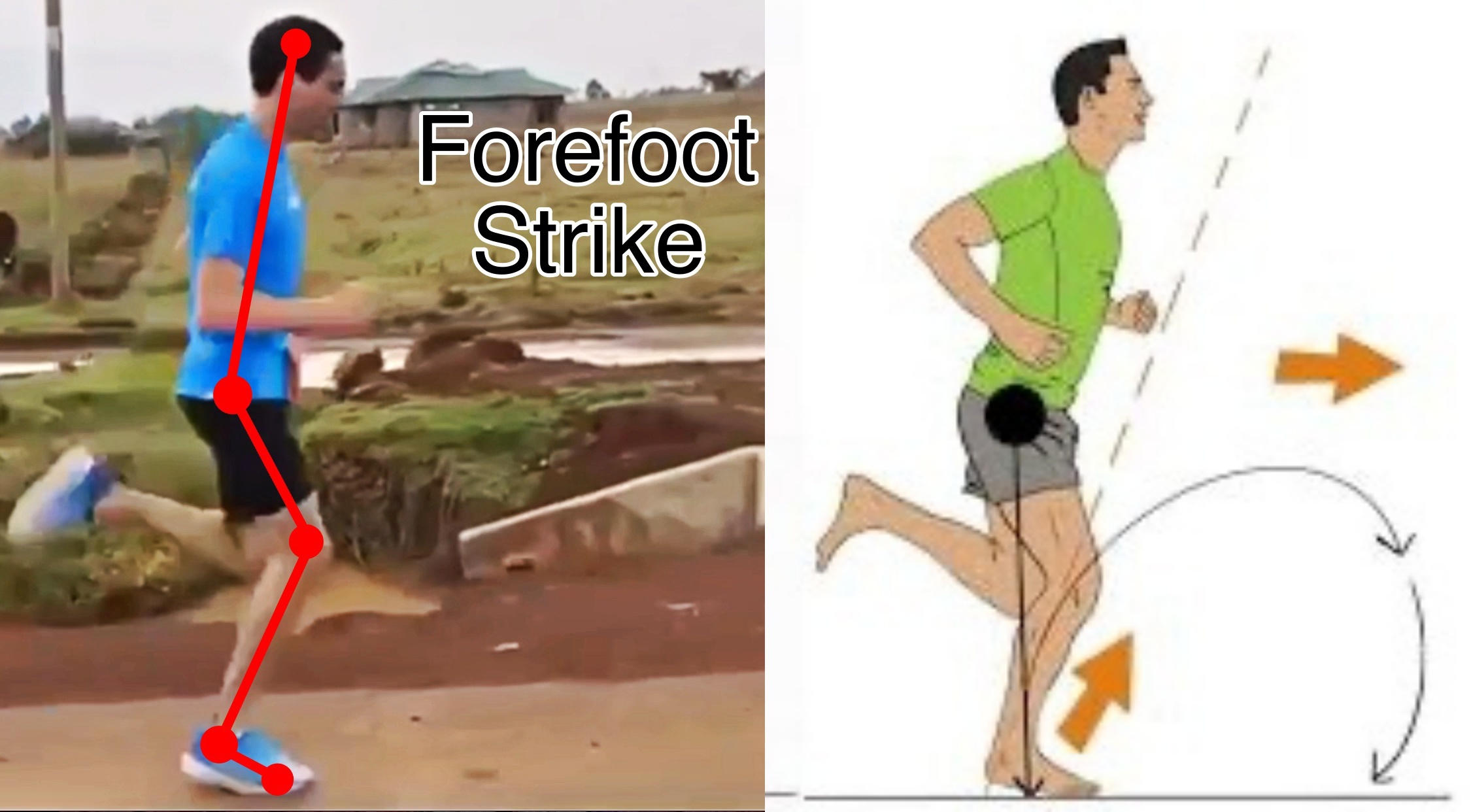If you’re a heel strike runner, your feet are at the greatest risk of severe injury as compared with forefoot running. One of the many reasons heel strike running isn’t the best way to connect with the ground is it produces higher-than-normal impacts that accounts for nearly all injuries, and is the leading cause of a metatarsal stress fracture in the foot.
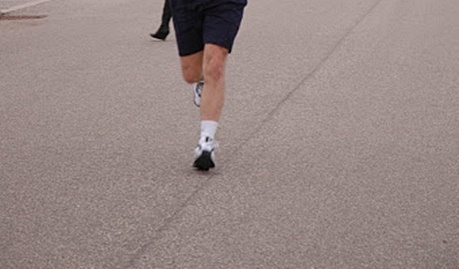
Ample evidence in the American Journal of Sports Medicine examined the effects of muscular fatigue on metatarsal stress bone fracture development in tri-athletes who were heel strikers.
The study found that increased fatigue led to alterations in the foot rollover phase, shown below, which increased peak pressure forces and impulse under the second and third metatarsal heads as well as under the medial forefoot.
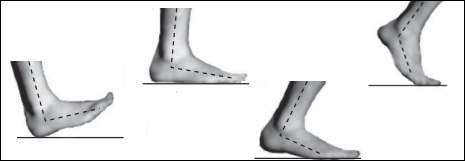
This is why stress fractures of the second and third metatarsal heads are more common in runners who heel strike because of the major differences in foot loading as compared with forefoot running, where the foot-rollover phase is eliminated and so are injurious over-loads to the foot.
The same study also found that when fatigued, the heel strike runners had a change in pressure distribution patterns over the foot, showing stark increases in impact pressure under the big toe and under the medial forefoot, shown below:
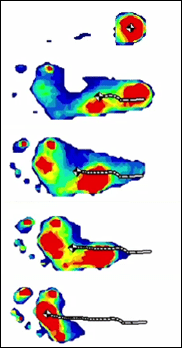
Whats worse, the study revealed that these adaptations to fatigue while heel striking when running increases forefoot loading at push-off, resulting in abnormal remodelling of the metatarsals and increases the risk of fatigue fracture!
Why Forefoot Striking is the BEST Way to Use Your Feet When Running
Rarely do habitual forefoot strike runners suffer bone fractures of the foot because for one, since the foot-rollover phase is eliminated, the foot is not used to aggressively thrust the entire body forward. This is because landing with a forefoot strike has a positive cascading effect on your entire running form in that it allows your knee to bend at landing, which enables the foot to land closer to your center mass (upper body), shown below.
Forefoot running also enables your torso to lean slightly forward. The net effect of this is a higher cadence, which means ground-contact is very minimal, which also means the foot’s interaction on the ground is so brief that many forms of impact are produced in significantly lower amounts and some impacts aren’t even produced at all!
Another reason there’s a very narrow set of impact forces acting on the foot in forefoot running is because there’s automatically more surface on the foot to spread impact on. This is better for injury prevention because there’s actually less forces acting across the foot, since landing on the forefoot disperses impact pressure evenly on a wider surface area, so there’s no damaging pressure hot spots to any one point on the foot.
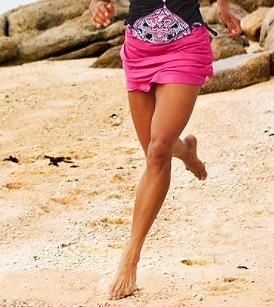
This is how forefoot running provides all the impact-protection to support as many miles as you want to go!
The Take Home Message
There are two major takeaways from this post:
- <Your collective biomechanics when running largely depends on your foot strike pattern
- You can produce your own impact protections by forefoot striking
In running, the forefoot strike is a mechanical imperative to keeping damaging impacts either very minimal, or un-produced, since these reductions in net forces are induced by a shorter stride, a higher cadence and a larger foot contact area, makes forefoot running the BEST basis for low impact!

Still unconvinced heel strike running isn’t all that bad? Here are more evidence-based reasons the human body is not adapted for heel strike running.
References:
Weist, R., Eils, S and Rosenbaum, D. (2004). The influence of muscle fatigue on electromyogram and plantar pressure patterns as an explanation for the incidence of metatarsal stress fractures. Am J Sports Med, 32(8):1893-8.
Bretta Riches
BSc Neurobiology; MSc Biomechanics candidate, ultra minimalist runner & founder of RunForefoot. I was a heel striker, always injured. I was inspired by the great Tirunesh Dibaba to try forefoot running. Now, I'm injury free. This is why I launched Run Forefoot, to advocate the health & performance benefits of forefoot running and to raise awareness on the dangers of heel striking, because the world needs to know.
Latest posts by Bretta Riches (see all)
- Can You Run In Barefoot Shoes? Yes, But DON’T Heel Strike! - 21/07/2024
- Why Cushioned Running Shoes Are Really Bad for Your Feet - 19/07/2024
- Do Cushioned Running Shoes Cause Injuries? - 17/07/2024

